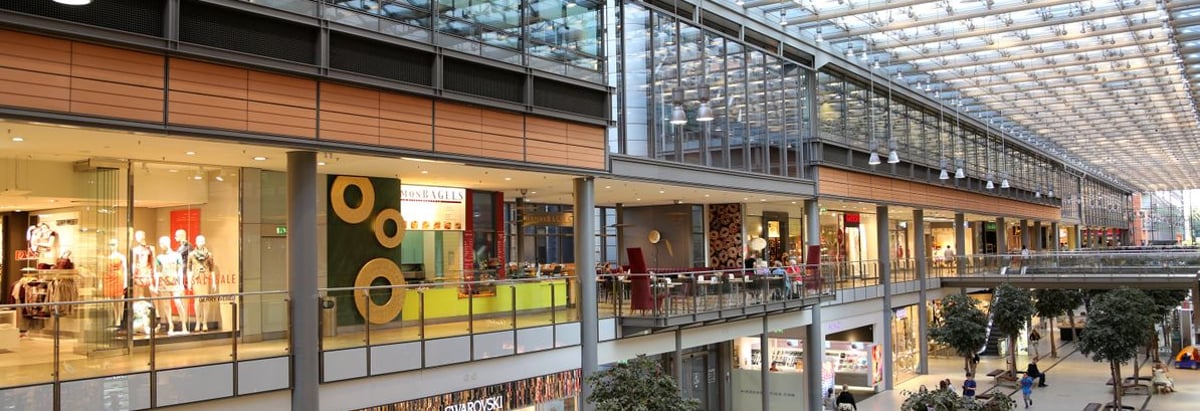Stock Analysis
Returns On Capital Signal Difficult Times Ahead For Maoye International Holdings (HKG:848)

If we're looking to avoid a business that is in decline, what are the trends that can warn us ahead of time? A business that's potentially in decline often shows two trends, a return on capital employed (ROCE) that's declining, and a base of capital employed that's also declining. This reveals that the company isn't compounding shareholder wealth because returns are falling and its net asset base is shrinking. And from a first read, things don't look too good at Maoye International Holdings (HKG:848), so let's see why.
What Is Return On Capital Employed (ROCE)?
For those who don't know, ROCE is a measure of a company's yearly pre-tax profit (its return), relative to the capital employed in the business. Analysts use this formula to calculate it for Maoye International Holdings:
Return on Capital Employed = Earnings Before Interest and Tax (EBIT) ÷ (Total Assets - Current Liabilities)
0.04 = CN¥1.1b ÷ (CN¥48b - CN¥21b) (Based on the trailing twelve months to June 2024).
Thus, Maoye International Holdings has an ROCE of 4.0%. In absolute terms, that's a low return and it also under-performs the Multiline Retail industry average of 6.1%.
Check out our latest analysis for Maoye International Holdings
Historical performance is a great place to start when researching a stock so above you can see the gauge for Maoye International Holdings' ROCE against it's prior returns. If you'd like to look at how Maoye International Holdings has performed in the past in other metrics, you can view this free graph of Maoye International Holdings' past earnings, revenue and cash flow.
What Does the ROCE Trend For Maoye International Holdings Tell Us?
In terms of Maoye International Holdings' historical ROCE movements, the trend doesn't inspire confidence. Unfortunately the returns on capital have diminished from the 7.4% that they were earning five years ago. Meanwhile, capital employed in the business has stayed roughly the flat over the period. This combination can be indicative of a mature business that still has areas to deploy capital, but the returns received aren't as high due potentially to new competition or smaller margins. So because these trends aren't typically conducive to creating a multi-bagger, we wouldn't hold our breath on Maoye International Holdings becoming one if things continue as they have.
On a side note, Maoye International Holdings' current liabilities are still rather high at 44% of total assets. This can bring about some risks because the company is basically operating with a rather large reliance on its suppliers or other sorts of short-term creditors. While it's not necessarily a bad thing, it can be beneficial if this ratio is lower.
The Bottom Line On Maoye International Holdings' ROCE
In the end, the trend of lower returns on the same amount of capital isn't typically an indication that we're looking at a growth stock. Investors haven't taken kindly to these developments, since the stock has declined 68% from where it was five years ago. With underlying trends that aren't great in these areas, we'd consider looking elsewhere.
Since virtually every company faces some risks, it's worth knowing what they are, and we've spotted 4 warning signs for Maoye International Holdings (of which 2 are potentially serious!) that you should know about.
While Maoye International Holdings isn't earning the highest return, check out this free list of companies that are earning high returns on equity with solid balance sheets.
New: Manage All Your Stock Portfolios in One Place
We've created the ultimate portfolio companion for stock investors, and it's free.
• Connect an unlimited number of Portfolios and see your total in one currency
• Be alerted to new Warning Signs or Risks via email or mobile
• Track the Fair Value of your stocks
Have feedback on this article? Concerned about the content? Get in touch with us directly. Alternatively, email editorial-team (at) simplywallst.com.
This article by Simply Wall St is general in nature. We provide commentary based on historical data and analyst forecasts only using an unbiased methodology and our articles are not intended to be financial advice. It does not constitute a recommendation to buy or sell any stock, and does not take account of your objectives, or your financial situation. We aim to bring you long-term focused analysis driven by fundamental data. Note that our analysis may not factor in the latest price-sensitive company announcements or qualitative material. Simply Wall St has no position in any stocks mentioned.
About SEHK:848
Maoye International Holdings
An investment holding company, operates and manages department stores in the People’s Republic of China.

